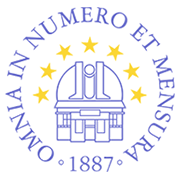Microfossils in Carbonaceous Meteorites: Implications to the Distributions of Biospheres
Излагач
Richard B. Hoover, NASA Emeritus, United States Space and Rocket Center, One Tranquility Base, Huntsville, AL, USA
Апстракт
Carbonaceous meteorites are messengers from space. The Orgueil (CI1-France,1864) and Murchison (CM2-Australia, 1969) contain high percentages of extraterrestrial water (3–20%) and carbon (2-5 %), mainly in the form of a kerogen-like insoluble organic matter (IOM). Independent Scanning Electron Microscopy studies of meteorites were by Hoover at NASA/MSFC [2] and Rozanov ta the Borissiak Paleontological Institute (RAS) [3] revealed recognizable filamentous cyanobacteria in freshly fractured surfaces of the Murchison CM2 meteorite. Subsequent SEM studies have found well-preserved remains of diatoms, cyanobacteria and a diversity of other prokaryotic and eukaryotic microorganisms in many carbonaceous meteorites [4-6].
Carbonaceous meteorites contain 10 of the 20 life critical protein amino acid (some greater L-enantiomer excess than produced by abiotic processes) and 3 of the 5 nucleobases essential for life. Carbon isotope studies show the nucleobases in Murchison were indigenous, extraterrestrial and indicative of a cometary parent body [7]. Simonia [8] found that spectral lines of proteins and pigments such as Luciferase, Chlorophyll and other complex biomolecules produced only by biology precisely match many unidentified lines in the spectra of comets. However, PCR amplification studies sensitive enough to detect a single bacterium have failed to detect RNA, DNA and unstable life critical amino acids in meteorites. This provides clear and convincing evidence that the meteorites are not contaminated by terrestrial microbiota [9].
This presentation will provide new SEM images and EDS for diatoms, cyanobacteria and exotic microbes in meteorites. ENAA data will be presented showing astonishingly high levels of radiogenic Heat Producing Elements (40K, 238U and 232Th) in the Polonnaruwa/Aralaganwila meteorites. These low-density/high porosity stones are similar to the dark, low-density weak boulders (~Gargoyle Saxum) found on asteroid (101955) Bennu by OSIRIS Rex [10]. These results will be discussed in the context of haddal life in deep crustal rocks and oceans beneath icy crusts of moons and planets. A novel “Wet Panspermia” hypothesis will be proposed with implications to the distribution of Life and Intact Biospheres throughout the Cosmos [11].
Carbonaceous meteorites contain 10 of the 20 life critical protein amino acid (some greater L-enantiomer excess than produced by abiotic processes) and 3 of the 5 nucleobases essential for life. Carbon isotope studies show the nucleobases in Murchison were indigenous, extraterrestrial and indicative of a cometary parent body [7]. Simonia [8] found that spectral lines of proteins and pigments such as Luciferase, Chlorophyll and other complex biomolecules produced only by biology precisely match many unidentified lines in the spectra of comets. However, PCR amplification studies sensitive enough to detect a single bacterium have failed to detect RNA, DNA and unstable life critical amino acids in meteorites. This provides clear and convincing evidence that the meteorites are not contaminated by terrestrial microbiota [9].
This presentation will provide new SEM images and EDS for diatoms, cyanobacteria and exotic microbes in meteorites. ENAA data will be presented showing astonishingly high levels of radiogenic Heat Producing Elements (40K, 238U and 232Th) in the Polonnaruwa/Aralaganwila meteorites. These low-density/high porosity stones are similar to the dark, low-density weak boulders (~Gargoyle Saxum) found on asteroid (101955) Bennu by OSIRIS Rex [10]. These results will be discussed in the context of haddal life in deep crustal rocks and oceans beneath icy crusts of moons and planets. A novel “Wet Panspermia” hypothesis will be proposed with implications to the distribution of Life and Intact Biospheres throughout the Cosmos [11].
Референце
[1] Nagy B. Carbonaceous meteorites. Elsevier Science Publishing, 1975. 747 p.
[2] Hoover R. B. Meteorites, Microfossils and Exobiology// Proceedings of SPIE. V. 3111, 1997. P. 115-136.
[3] Zhmur, S. I., Rozanov, A. Yu., et al., Lithified Remnants of Microorganisms in Carbonaceous Chondrites. Geochemistry International. 1997. V. 35, P. 58-60.
[4] Hoover, R. B. Fossils of Cyanobacteria in CI1 Carbonaceous Meteorites. Journal of Cosmology. 2011. V. 13, P. 1-49.
[5] Hoover, R. B. et al. (2018) Diatoms in the Orgueil Meteorite. Paleontological Journal, 52, 1647-1650.
[6] Rozanov, A. Yu., Hoover, R. B. et al. The Orgueil Meteorite (Atlas of Microfossils). 2020. P. 1-130. ISBN 978-5-903825-42-4
[7] Ehrenfreund P. et al., (2001) Extraterrestrial amino acids in Orgueil and Ivuna: Tracing the parent body of CI type carbonaceous chondrites. PNAS, 2001. V. 98. 2138-2141.
[8] Simonia, I. and Cruikshank, D. P. (2018) Organic Molecules in the Icy Bodies of Planetary Systems – Accepted Notions and New Ideas. De Gruyter, Open Astron. 27, P. 341-355.
[9] Aerts J. et al. (2016) A contamination assessment of the CI carbonaceous meteorite Orgueil using a DNA-directed approach. Meteoritics & Planet. Sci. 51, 920–931.
[10] Hoover, R.B., Frontasyeva, M.A. and Pavlov, S. Epithermal Neutron Activation Analysis of Carbonaceous Chondrites and the Polonnaruwa/ Aralaganwila Stone. Aspects Min Miner Sci. 6(1). AMMS. 000626. 2020. DOI: 10.31031/AMMS.2020.06.000626
[11] Hoover, R.B., Frontasyeva, M.A., Pavlov, S. Rozanov, A. Yu., Wallis, D. H. and Wickramasinghe, N. C. ENAA and SEM Investigations of Carbonaceous Meteorites: Implications to the Distribution of Life and Biospheres. (2021) Academia Journal of Scientific Research 9(5) 096-104.
[2] Hoover R. B. Meteorites, Microfossils and Exobiology// Proceedings of SPIE. V. 3111, 1997. P. 115-136.
[3] Zhmur, S. I., Rozanov, A. Yu., et al., Lithified Remnants of Microorganisms in Carbonaceous Chondrites. Geochemistry International. 1997. V. 35, P. 58-60.
[4] Hoover, R. B. Fossils of Cyanobacteria in CI1 Carbonaceous Meteorites. Journal of Cosmology. 2011. V. 13, P. 1-49.
[5] Hoover, R. B. et al. (2018) Diatoms in the Orgueil Meteorite. Paleontological Journal, 52, 1647-1650.
[6] Rozanov, A. Yu., Hoover, R. B. et al. The Orgueil Meteorite (Atlas of Microfossils). 2020. P. 1-130. ISBN 978-5-903825-42-4
[7] Ehrenfreund P. et al., (2001) Extraterrestrial amino acids in Orgueil and Ivuna: Tracing the parent body of CI type carbonaceous chondrites. PNAS, 2001. V. 98. 2138-2141.
[8] Simonia, I. and Cruikshank, D. P. (2018) Organic Molecules in the Icy Bodies of Planetary Systems – Accepted Notions and New Ideas. De Gruyter, Open Astron. 27, P. 341-355.
[9] Aerts J. et al. (2016) A contamination assessment of the CI carbonaceous meteorite Orgueil using a DNA-directed approach. Meteoritics & Planet. Sci. 51, 920–931.
[10] Hoover, R.B., Frontasyeva, M.A. and Pavlov, S. Epithermal Neutron Activation Analysis of Carbonaceous Chondrites and the Polonnaruwa/ Aralaganwila Stone. Aspects Min Miner Sci. 6(1). AMMS. 000626. 2020. DOI: 10.31031/AMMS.2020.06.000626
[11] Hoover, R.B., Frontasyeva, M.A., Pavlov, S. Rozanov, A. Yu., Wallis, D. H. and Wickramasinghe, N. C. ENAA and SEM Investigations of Carbonaceous Meteorites: Implications to the Distribution of Life and Biospheres. (2021) Academia Journal of Scientific Research 9(5) 096-104.



